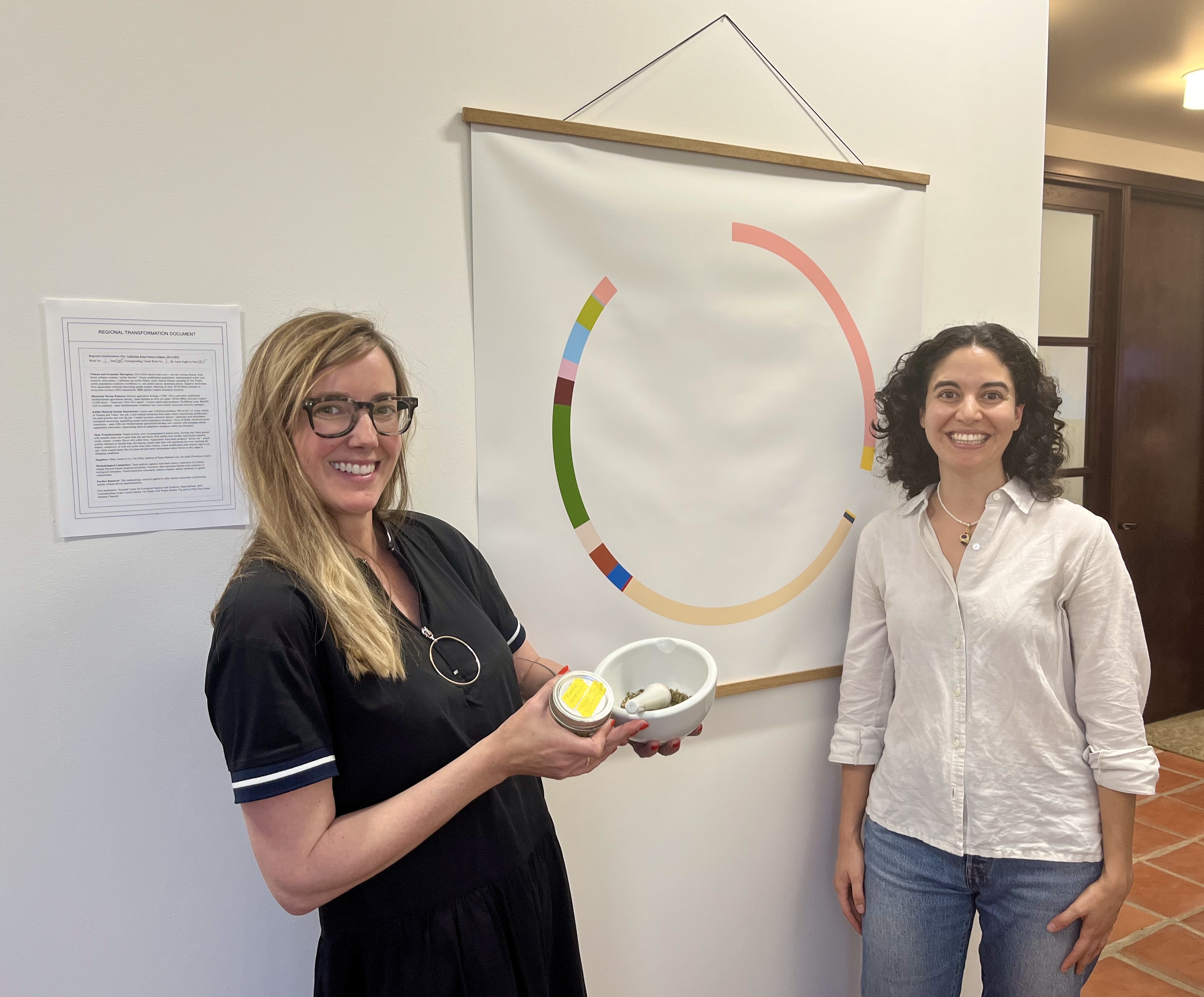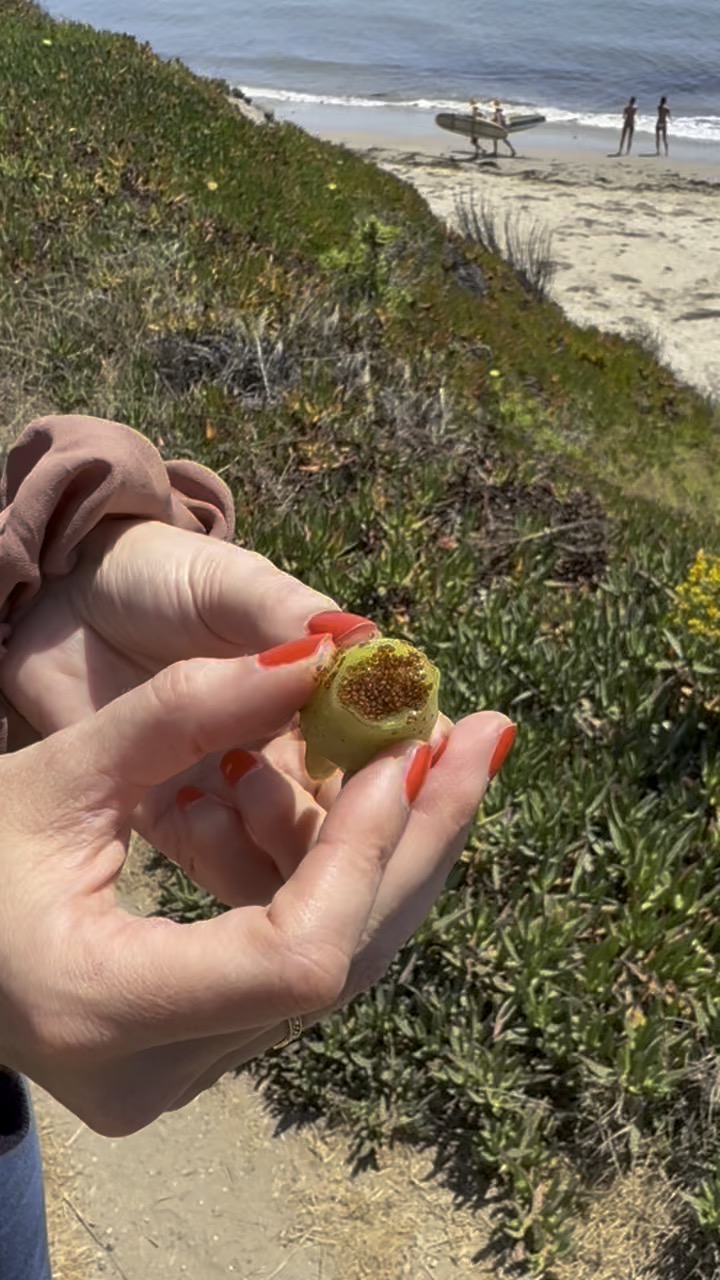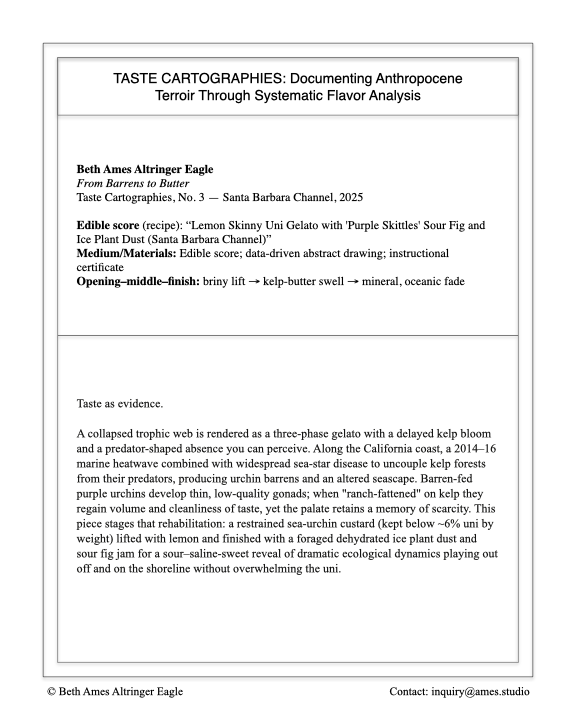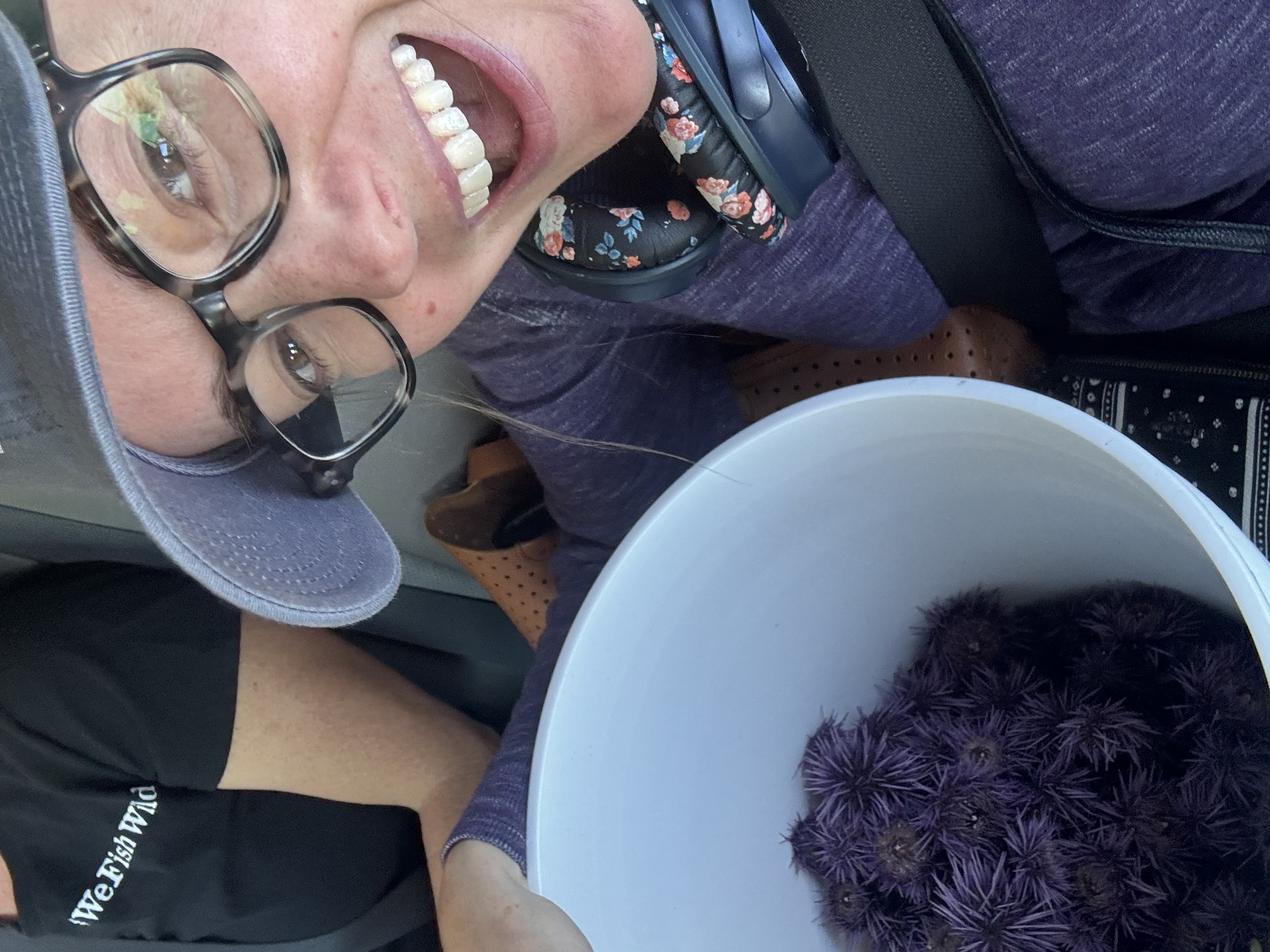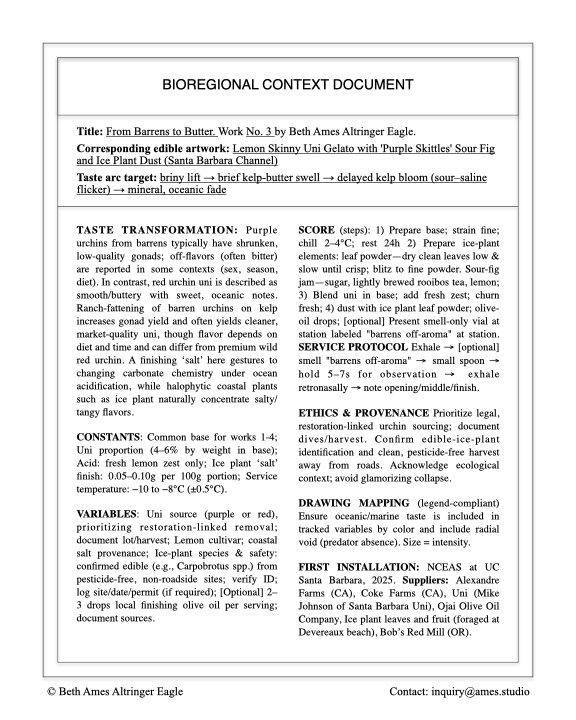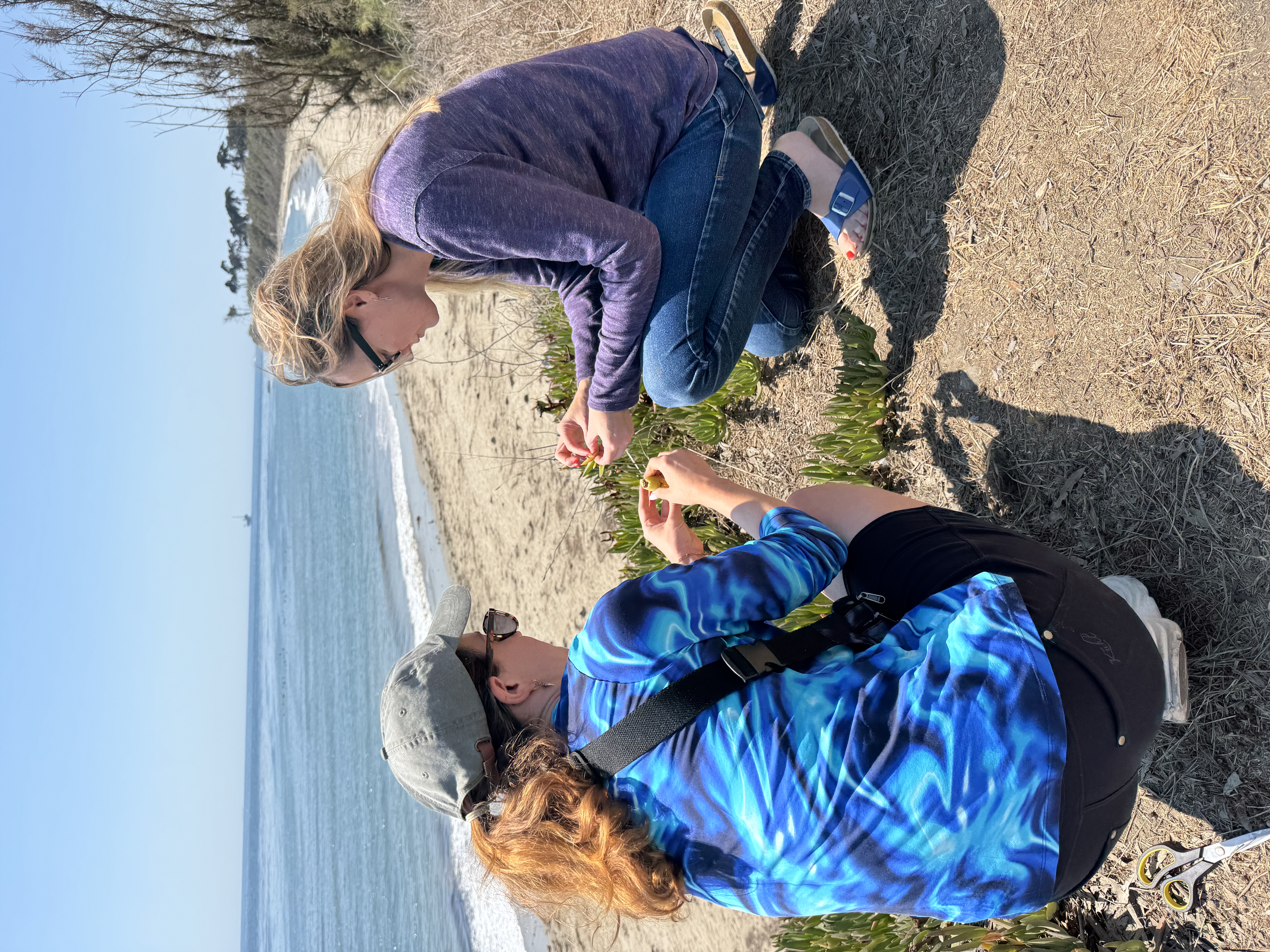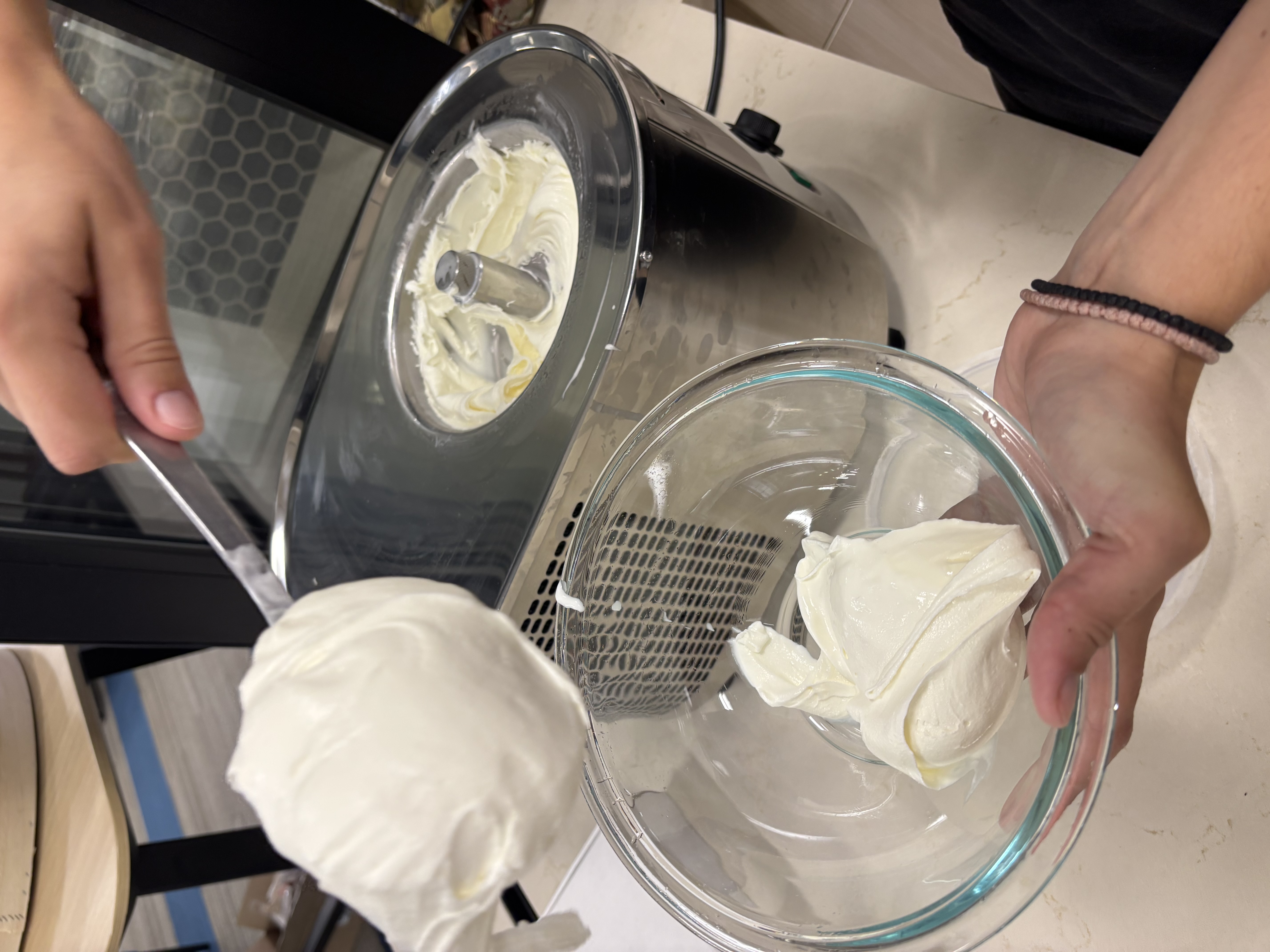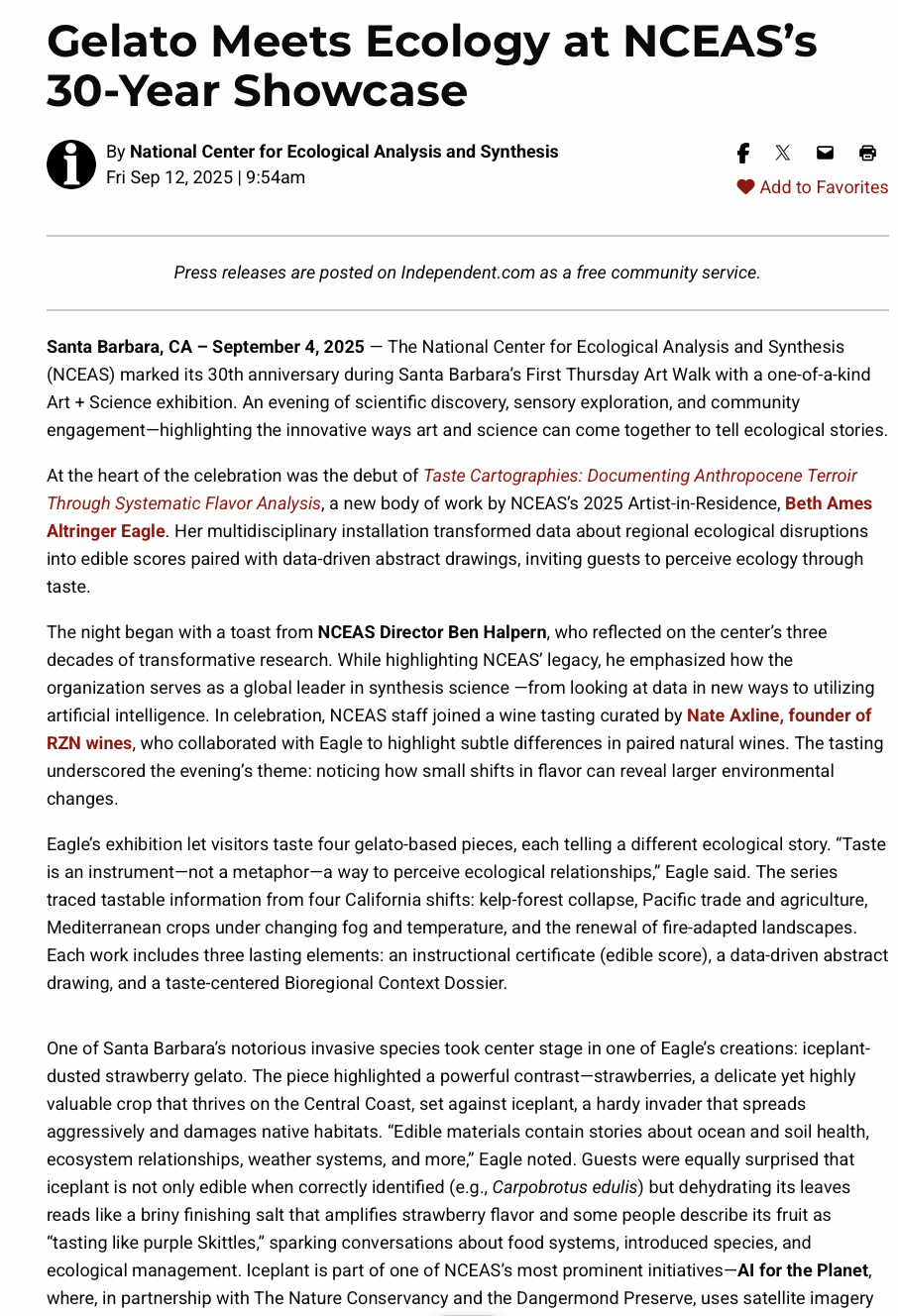Taste Cartographies
Documenting Anthropocene Terroir Through Systematic Flavor Analysis
Project focus: Systematic translation of regional ecological systems into visual language using taste as research method, developing new approaches to place-based environmental knowledge
Roles:
2025 Artist in Residence at National Center for Ecological Analysis and Synthesis (NCEAS) at UC Santa Barbara
Taste Cartographies - No. 1-4
Taste is used here as a research instrument, not a metaphor. Each of the four works (not all shown in images) translates a regional ecological transformation into a reproducible, time-based edible score paired with a data-driven abstract drawing that represents perceived taste. These works compose original flavors for an installation, using flavor like pigments in a painting, to tell stories of anthropocene terroir. The edible materials in Work #3 (shown in images), “From Barrens to Butter”, include sea urchin and ice plant (Carpobrotus edulis) ‘purple skittles’ and ice plant ‘salt’, with sourcing down to named harvesting hands. Together, an instructional certificate (containing the edible score), data-driven abstract drawing, and Bioregional Context Dossier form a single artwork that can be performed, conserved, and collected.
Drawing legend. Each composition visualizes human taste perception of the edible score as abstract form. Color encodes the perception of taste attributes (acid/salt/sweet/bitter/umami/floral/oceanic) and size encodes intensity. Some drawings may additionally encode aromatic volatility, persistence, mineral/saline granularity and more. Variables are intentionally unlabeled to invite direct, personal exploration of relational taste. Gaps in scientific and perceptual knowledge are visually represented to invite experimentation and discussion.
Shared base; past & future. All four of these works share a common ‘base’ so that differences in taste arise from ecology, not the chassis. A common base helps the audience parallel taste and perceptually ‘ignore’ shared taste information to focus on differences, much as scientists do when analyzing data. Gelato was selected as the material to enhance public engagement; fun expands attention to make room for learning about deeper material. The exhibition represents the culmination of a year of the artist’s material explorations that included making 101 custom flavors. The adapted Sicilian base—starch base, locust-bean gum, low overrun, rapid hardening—was chosen because it is built for heat and helps retain fragile aromatics (e.g., citrus, pistachio). As the Santa Barbara region warms and dries, this approach serves as a climate analogue, pairing inherited technique with changing ecologies so you can taste where flavor came from—and where it’s going. Italian—often Sicilian—immigrants also carried versions of these practices to the West Coast, shaping West coast ice-cream culture. Etna’s volcanic soils and California’s fire-affected soils differ, but both show how disturbance writes itself into flavor.
Installation: National Center for Ecological Analysis and Synthesis (NCEAS) x UC Santa Barbara, California, 2025.

